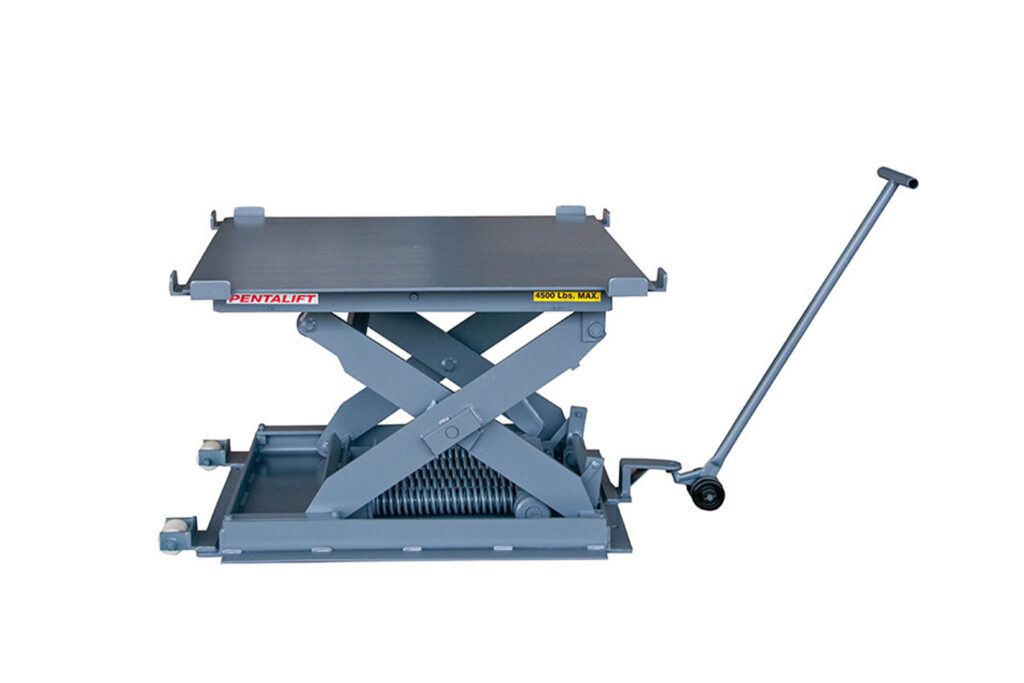In the fast-paced manufacturing, distribution, and logistics world, efficiency is the most valuable currency. Every second counts, every action makes a difference, and every resource must be exploited to the maximum. This area is where the lift tables come into the picture so that the materials are handled, positioned and transported inside different industries more efficiently. Read this article to learn how lift tables can increase the productivity of your business operations.

Understanding Lift Tables
A lift table is a multipurpose device that is designed to raise, lower, and position materials in a controlled way. Lift tables are available in numerous types designed in different ways to serve various uses. They are as follows:
- Hydraulic Lift Tables:
These tables use hydraulic power to lift and lower the load. With the robust build and high-weight capacities, hydraulic lift table proved to be very effective in heavy-duty applications where smooth lifting and precise positioning are of the essence. These lift tables, from manufacturing plants to warehouses, are a key factor in material handling improvement.
- Electric Lift Tables:
Powered by electric motors, the system provides precise control over the lifting and lowering processes. Electric lift tables are popular for their dependability, operation simplicity, and ability to manage various loads with precision. They are widely used in assembly lines, packaging centers, and distribution centers. This lift table is a versatile solution for automating material handling processes.
- Pneumatic Lift Tables:
Pneumatic lift tables function on compressed air, and thus, provide a smooth and quiet lifting action. These tables are perfect for uses when there is no electricity or when there is the need for quiet operation. From cleanroom environments to automotive assembly lines these lift tables are designed to provide reliable performance with almost no maintenance.
- Pallet Lift Tables:
These tables, designed to handle palletized loads. They have built-in fork pockets and safety features specially designed for lifting and loading pallets. Pallet lift tables are irreplaceable in warehouses and distribution centers. These tables are useful where effective pallet handling is the priority for the best use of the storage space and an optimized workflow.
Advantages of Using Lift Tables for Materials Handling Efficiency
- Increased Productivity:
Through the automation of lifting and positioning operations, lift tables remove the need for manual work and enable the reduction of time needed for the handling of materials. This leads to a faster response time and higher productivity.
- Enhanced Ergonomics:
Lifting and carrying of heavy objects by hand can cause fatigue, injuries, and less effectiveness of employees. Lift tables help to eliminate this problem by offering a safer and ergonomic alternative for lifting and placing materials. Lift tables are helpful because they help reduce the strain on workers’ bodies. This result in a healthier and more productive environment.
- Space Optimization:
In the cut-throat business environment, it is imperative to increase floor space and storage capacity so as to remain competitive. Raising tables are the means to achieve this goal which enables easy vertical storage and placement of materials. Through the use of vertical space more efficiently, businesses can create an ergonomic layout, better workflow, and increase the level of operational productivity.
- Versatility:
A big advantage of lift tables is their versatility. Whether it is putting heavy machinery in a manufacturing plant or placing items on the assembly line, lift tables can meet a wide range of applications. This adaptability is the reason why they are considered the best tools for most businesses with varied interests.
Practical Tips for Maximizing Lift Table Efficiency
1. Proper Training: Make sure all the operators will be given full training including safe and proper utilization of lift tables. Training should be about the correct operations, load limits, safety procedures, and maintenance guidelines.
2. Regular Maintenance: Follow a regular maintenance schedule to keep lift tables operating in good condition. This includes regulating moving parts, checking hydraulic systems, testing worn components, and immediately addressing any identified problems.
3. Load Management: Judge and distribute the load correctly in order to prevent the overloading of the lift table. Employ the specified load charts and weight capacities provided by the manufacturer to check the corresponding safe load limits.
4. Safety Measures: Security should be the main concern through various measures like guard-rails, safety skirts, emergency stop buttons, as well as audible alarms. Do regular safety checks and attend to any safety issues at once to reduce the risk of incidents or injuries.
Final Words!
To sum up, lift tables act as a primary tool in the process of redesigning the operation of material handling. Hence, they contribute greatly to the performance of industries from various sectors. The benefits of lift tables are numerous and diverse, ranging from a productivity increase to space utilization optimization. From the shipment of palletized materials in a distribution center to the bulk handling of large loads in a manufacturing plant, lift tables can help. Through lift table acceptance, businesses can reach new levels of automation, productivity, and success. This, in turn, helps them to stay competitive in modern markets.